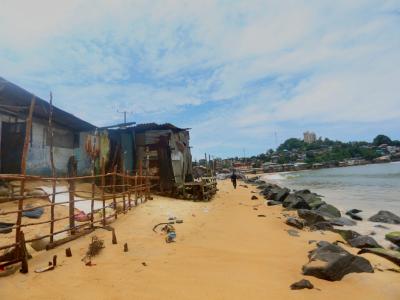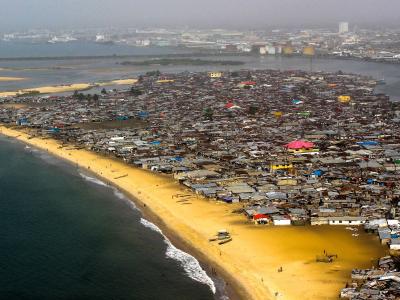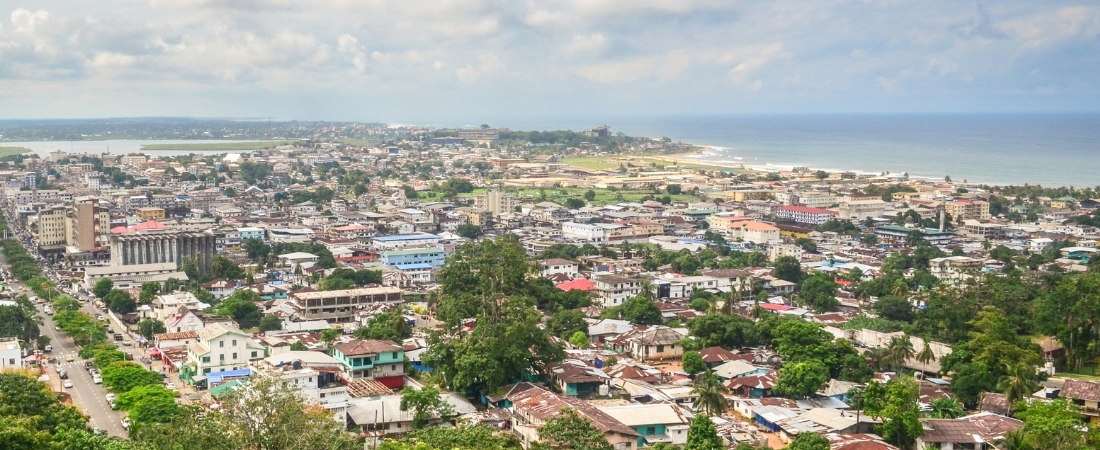
Photo:
Liberia’s capital city Monrovia is extremely vulnerable to sea-level rise and the increased frequency of high-intensity storms. These climate change-related impacts are contributing to coastal erosion and shoreline retreat, putting lives and livelihoods at risk, and affecting efforts by the Government of Liberia to reach the targets outlined in the Paris Agreement and Sustainable Development Goals.
Compounding these issues, sea-level rise and urban encroachment into the Mesurado Wetland in the center of Monrovia threatens the sustainability the ecosystem services and fisheries in the region.
To address these challenges, the Green Climate Fund-financed “Monrovia Metropolitan Climate Resilience Project” will enhance coastal protection, foster improved coastal management and present local communities with diversified climate-resilient livelihoods. In this way, the project will build the long-term climate resilience of coastal communities in Liberia by both addressing immediate adaptation priorities and creating an enabling environment for upscaling coastal adaptation initiatives to other parts of Monrovia and Liberia.
The project will directly benefit a total of approximately 250,000 people through coastal defense, enhanced livelihoods, and improved protection of mangrove ecosystems. In addition, the project will indirectly benefit approximately 1 million people through the adoption of a transformative, climate risk-informed Integrated Coastal Zone Management approach for Liberia, with the first phase of implementation focused on the Monrovia Metropolitan Area (MMA). The combination of direct and indirect beneficiaries under this project will ultimately confer adaptation benefits on one quarter of the total population of Liberia.
- Municipality
- Country Office
- Local Governments
- National Governments
- United Nations Development Programme (UNDP)
250,000 direct beneficiaries, 1 million indirect beneficiaries
- Government of Liberia
- Green Climate Fund
- United Nations Development Programme (UNDP)
Expected outcomes
Output 1: Protection of coastal communities and infrastructure at West Point against erosion caused by sea-level rise and increasingly frequent high-intensity storms.
Output 2: Institutional capacity building and policy support for the implementation of Integrated Coastal Zone Management (ICZM) across Liberia.
Output 3: Protecting mangroves and strengthening gender- and climate-sensitive livelihoods to build local climate resilience in Monrovia.
- Image
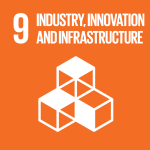
- Image
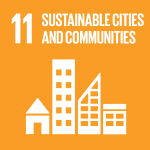
- Image

Liberia’s capital city, Monrovia[1], is extremely vulnerable to the climate change impacts of sea-level rise (SLR) and the increasing frequency of high-intensity storms, both of which contribute to coastal erosion and shoreline retreat. SLR is a significant contributor to accelerated coastal erosion, and along with the increasing intensity of offshore storms and waves, exacerbates coastal erosion, the impacts of which result in significant damage to buildings and infrastructure in Monrovia’s coastal zone. Additionally, SLR is threatening the sustainability of ecosystem services provided by mangroves in the Mesurado Wetland[2] at the centre of the Monrovia Metropolitan Area (MMA), which is further exacerbated by urban encroachment into, and over-exploitation of the mangroves. These changes negatively impact the habitat for economically important fish species and the loss of these nursery areas will have a considerable impact on the fishery-based livelihoods of approximately 55,000 Monrovians, 46% of whom are women.
The most vulnerable part of the MMA coast is West Point, an impoverished and densely-populated informal settlement situated on a narrow spit between the coast and the Mesurado Wetland, with dwellings built up to the shoreline. In the last decade[3], coastal erosion has caused the shoreline to regress by 30 m, leading to the loss of 670 dwellings and threatening public spaces and boat launching sites that are critical to fishery-based livelihoods. Without intervention — and with the added impact of climate change — coastal erosion is expected to cause further shoreline regression of 190 m by 2100. This is equivalent to an additional 110% more than the coastal retreat expected under a non-climate change or baseline scenario[4].
To adapt to the severe impacts of climate change on Monrovia’s coast, it is necessary to change the current approach to addressing the impacts of climate change from a focus on short-term solutions to long-term integrated and participatory planning that involves the public sector, private sector and communities at all levels of governance. The project is requesting GCF support to address barriers to effective climate change adaptation in the coastal zone of Monrovia, and Liberia more generally, through interventions in three inter-related focus areas: i) coastal protection; ii) coastal management; and iii) diversified climate-resilient livelihoods. In this way, the proposed project will build the long-term climate resilience of coastal communities in Liberia by both addressing immediate adaptation priorities and creating an enabling environment for upscaling coastal adaptation initiatives to other parts of Monrovia and Liberia.
The project will address one of the most urgent adaptation needs in Monrovia by constructing a rock revetment to protect West Point against coastal erosion and storms. The revetment was selected as the preferred solution, because while a ‘soft solution’ in the form of beach nourishment with an associated groyne was considered technically feasible, the sustainability of this option would be limited, because the regular maintenance required was not feasible in the local context[5]. From an infrastructural perspective, the project will protect and build the climate resilience of approximately 10,800 people in West Point and avoid damages of up to USD 47 million to the individual and communal property of West Point residents as well as securing launch sites for fishing boats which will have a positive impact on the fisheries sector. The construction of this coastal protection infrastructure will form part of a strategic, cohesive coastal adaptation strategy using an Integrated Coastal Zone Management (ICZM) approach.
The paradigm shift necessary for adopting an evidence-based and participatory ICZM approach across Liberia will be facilitated by the proposed project through initiatives to strengthen the technical and institutional capacity of the government and communities to adapt to the rapidly changing coastal landscape and to undertake long-term, climate-responsive planning on the coast. Based on quantitative, defensible scientific data in coastal management and planning, the proposed project will develop a national-scale high-resolution multi-criteria vulnerability map and design a national ICZM Plan (ICZMP) for Liberia in consultation with all relevant stakeholders, including the private sector. By fostering partnerships among government institutions and between the Government of Liberia (GoL), private sector actors, research institutions and communities, the project will improve coordination on coastal management and create an enabling environment for ongoing coastal adaptation beyond the project area and after the project implementation period.
The project will increase local adaptive capacity by strengthening gender- and climate-sensitive livelihoods and protecting mangroves in the Mesurado Wetland within Monrovia. Specifically, adaptative capacity in Monrovia will be increased by: i) safeguarding ecosystem services provided by mangroves and increasing the resilience of these ecosystems to climate change, through community co-management agreements between government and communities; ii) improving community knowledge on climate change impacts and adaptation practices; and iii) strengthening climate-sensitive livelihoods and supporting the uptake of climate-resilient livelihoods. This is an important element of the integrated approach because while the development of ICZMP will improve coastal management at an institutional level, limited institutional capacity in Liberia means that capacitating communities to engage positive adaptation strategies is critical to ensure an increase in their long-term climate resilience. The latter two activities will be based at the innovation and education centre — to be established in West Point. In addition to being the focal point for climate-resilient livelihood development, the innovation and education centre will act as a hub for awareness-raising and other community-led actions being implemented under the project[6]. An exit strategy and O&M plan (Annex 21) will ensure that the proposed project activities will be sustained in the long-term[7].
These investments by the GCF and the Government of Liberia (GoL) will catalyse a paradigm shift in the management of Monrovia’s coastal zone towards an integrated, transformative and proactive approach that addresses current and anticipated climate change risks and which mixes both infrastructure (where necessary) and coastal ecosystems in adaptation efforts. This will directly benefit a total of ~250,000 people in the communities of West Point through coastal defence and enhanced livelihoods; and through enhanced livelihoods and improved protection of mangrove ecosystems in the communities of Topoe Village; Plonkor and Fiamah; and Nipay Town and Jacob’s Town. In addition, the project will indirectly benefit approximately one million[8] people through the adoption of a transformative, climate risk-informed ICZM approach for Liberia, with the first phase of implementation focused on the Monrovia Metropolitan Area (MMA). The combination of direct and indirect beneficiaries under this project will ultimately confer adaptation benefits on one quarter of the total population of Liberia.
[1] In this proposal, ‘Monrovia’ and the ‘Monrovian Metropolitan Area’ (MMA) are used interchangeably to refer to the jurisdictional or administrative entity of the MMA.
[2] the estuary of the Mesurado River
[3] 2008 to 2018
[4] See Annex 2.B (Vulnerability Sub-assessment) for Economic and Financial Analysis of Monrovia Metropolitan Area, and specifically West Point.
[5] Stabilising or ‘fixing’ the shoreline by means of a rock revetment is the preferred solution to coastal erosion at West Point by both the Government of Libera and affected communities. This approach also represents the most socially sensitive design because it requires low-to-no maintenance while still accommodating boat launching and landing. A rubble mound revetment with rock armour, which is able to withstand extreme wave conditions and storm events, is proposed. The Engineering Sub-assessment Report (Annex 2.C) showed that the northern portion of the proposed revetment is a less dynamic wave environment, and the conceptual design for this portion of the intervention site consequently proposes lighter rock armour. The ‘toe’ of the structure will consist of a resistant geotextile and will be anchored in the existing beach sediment to a level of 5m below mean sea-level to account for future deepening of the area directly in front of the revetment. A six-metre wide promenade, for access to the shoreline and recreation activities, is proposed between the revetment and existing dwellings at West Point. Two boat launching and landing sites are proposed as part of the preferred option at the southern end and centre of the revetment, respectively. These launch and landing sites will be provided in addition to the open beach area to the north of the proposed revetment, where fishing boats are already launching and landing. Further details on the stakeholder engagement process that led to this decision is available in Annex 2.A Feasibility Study, Section 10.2 Analysis of coastal defence options.
[6] Recognising the risks of the COVID-19 pandemic, all project activities will operate strictly within government mandated regulations and best practices. All government directives, such as lockdowns and mandatory quarantine will be adhered to, as will any restrictions on travel, organisation of events or sizes of meetings and workshops.
[7] Further information on the exit strategy and sustainability of the proposed project can be found in Section B.6.
[8] Direct benefits will accrue at the site-specific scale, whereas indirect benefits will accrue at the municipal scale — i.e. the population of MMA, which is estimated at one million people.
Output 1: Protection of coastal communities and infrastructure at West Point against erosion caused by sea-level rise and increasingly frequent high-intensity storms.
Activity 1.1: Prepare construction plan and finalise technical design specifications for coastal defence structure at West Point.
Activity 1.2: Construct coastal defence structure to protect West Point against climate change-induced coastal erosion.
Output 2: Institutional capacity building and policy support for the implementation of Integrated Coastal Zone Management (ICZM) across Liberia.
Activity 2.1: Develop an Integrated Coastal Zone Management Plan for Liberia.
Activity 2.2: Capacitate the Cross-Sectoral Working Group to mainstream ICZM into relevant government sectors through a Training-of-Trainers approach.
Activity 2.3: Strengthen the asset base and technical capacity of the ICZMU for the collection of spatial and biophysical coastal information to support the implementation of the ICZMP.
Activity 2.4: Strengthen the existing Environmental Knowledge Management System (EKMS) to act as a platform for awareness-raising and sharing of climate risk-informed ICZM approach.
Activity 2.5: Conduct an awareness-raising campaign for communities in focus areas on climate change impacts and adaptation practices.
Output 3: Protecting mangroves and strengthening gender- and climate-sensitive livelihoods to build local climate resilience in Monrovia.
Activity 3.1: Establish a community education and innovation centre to function as a community knowledge generation and learning hub, a repository on climate change adaptation practices and host community activities under Output 3.
Activity 3.2: Establish community-led co-management agreement to ease anthropogenic pressure on mangroves in the MMA.
Activity 3.3: Conduct annual assessments to evaluate the project-induced changes in mangrove degradation, community perceptions and awareness of climate change impacts, adaptation options and mangrove ecosystems throughout the project implementation period.
Activity 3.4: Establish small-scale manufacturing facilities and develop training material to capacitate community members to manufacture and sell cookstoves to support alternative climate-resilient livelihoods.
Activity 3.5: Purchase and install low-maintenance eco-friendly cold storage facilities near fish processing sites to reduce pressure on mangroves and increase market efficiency
- UNDPMuyeye ChambweraRegional Technical Advisor


